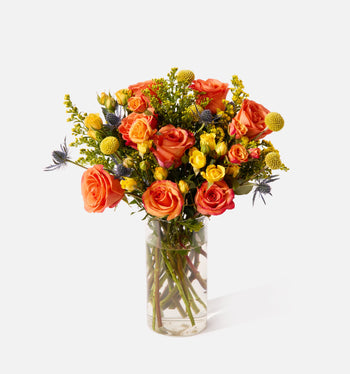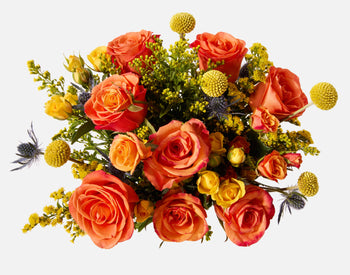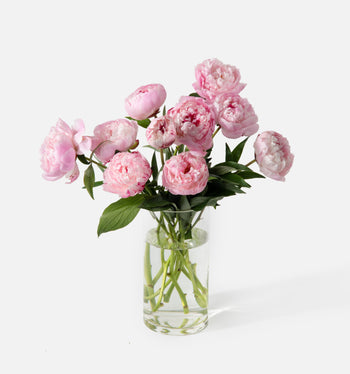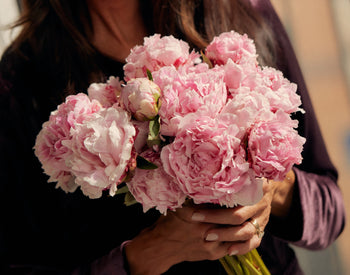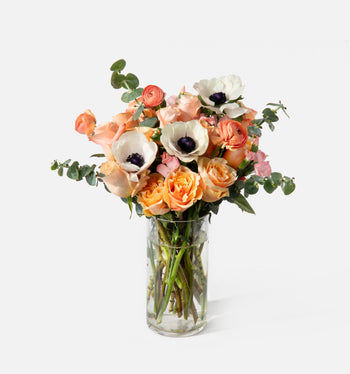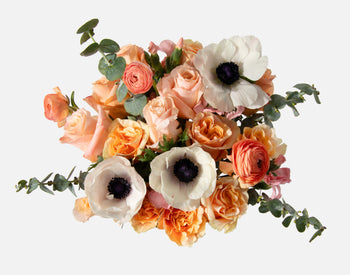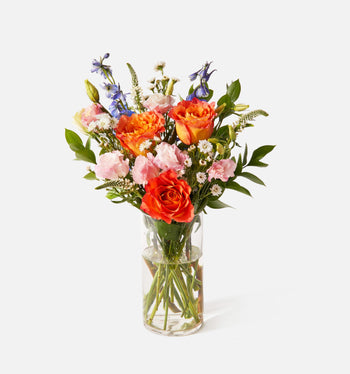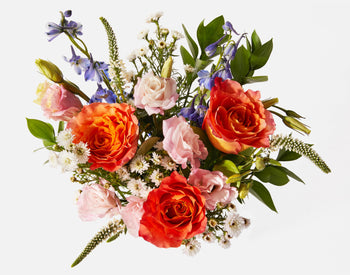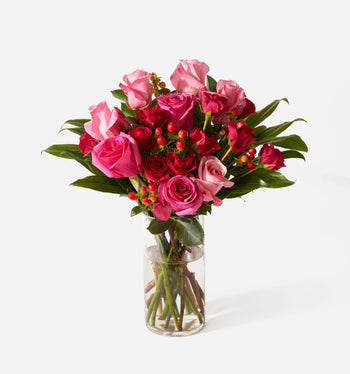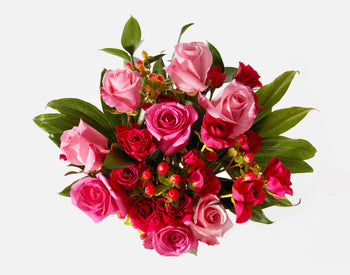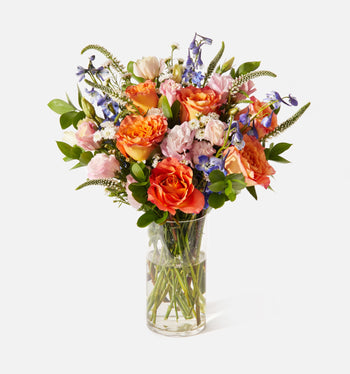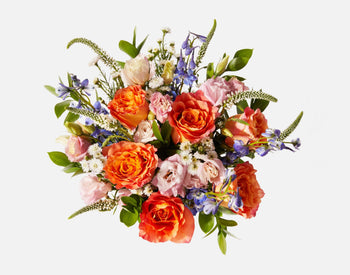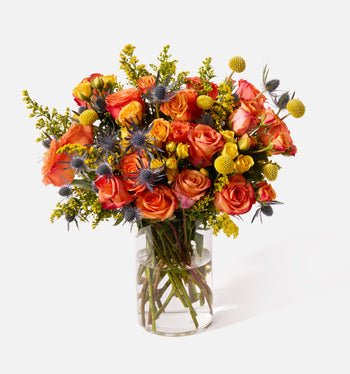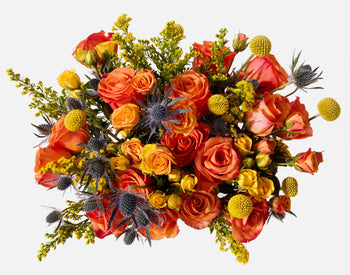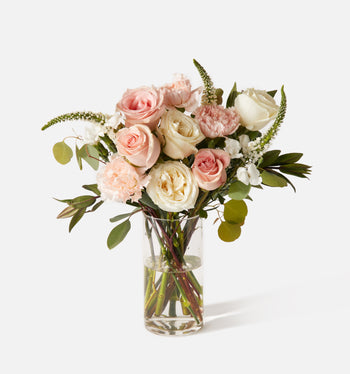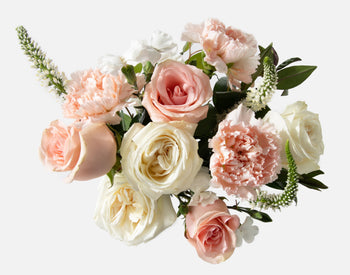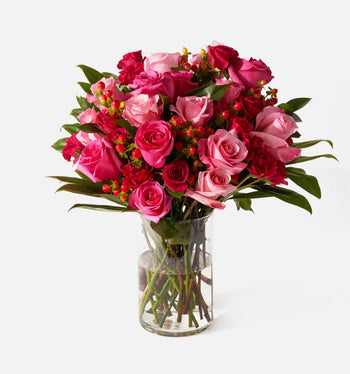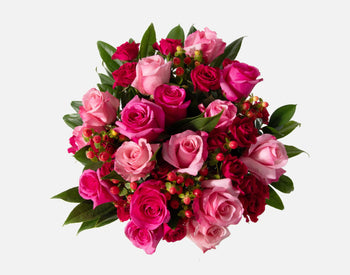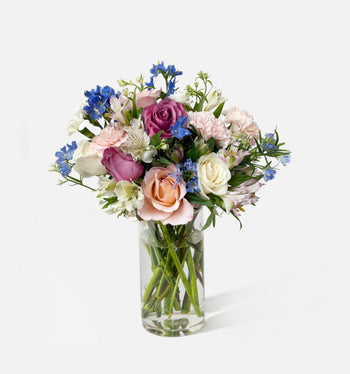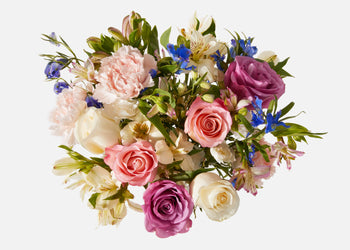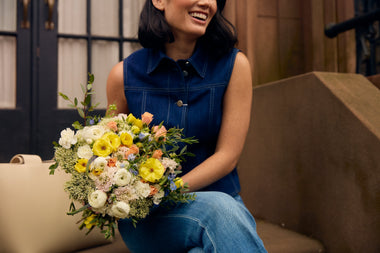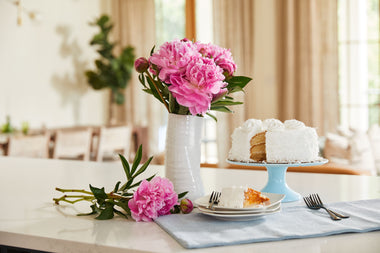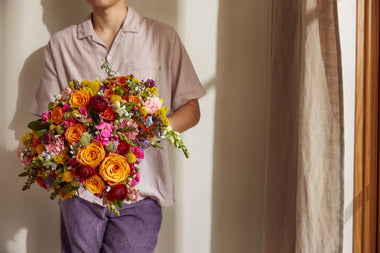Poinsettias, right? They become ubiquitous every holiday season, which makes sense visually. Their red and green coloration makes them perfect plants to ring in the seasonal cheer and yet, there are practically a million reasons to hate them. They’re not pet safe, they die almost immediately when exposed to cold air (40 degrees fahrenheit or under), etc. Don’t tempt me, I really could go on all day. No shade if you love a poinsettia, but I want to share some other options this winter in case you’re a dedicated hater like I am.
1. Helleborus
Lenten Roses, whatever you call them, Hellebores are stunning. They’re flowering perennial plants (that typically thrive in northern states) and very early bloomers. I happened to be at the flower market in early November, and there were blooming Hellebores available. They can be used (depending on whether they’re hot house grown or not) either as ornamental indoor plants, or as gorgeous accents in Winter container gardens. Typically, they’ll hold their bloom until a hard frost (if planted early in the season), and if they’ve become perennial in your garden, they can bloom as early as February. They come in a gorgeous array of purple and white shades, and I don’t know what more to say here except that they’re dreamy.

2. Cyclamen

I am, personally, obsessed with these because they have double appeal! Adorable swirling little flowers (that come in reds, whites, and shades of pinks) but they also have silvery little patterns on their leaves. So! No matter where you look, a cyclamen will have something to show off! Our The Nice List is an adorable red cyclamen in a cute footed pot, and she really makes the perfect little accent for your home or for a host this season. These cuties love cold weather and can even be enjoyed outside until temps drop below 40 (F) at night consistently. One thing to note, they’re grown from bulbs so they're sensitive to overwatering. Most plant parents recommend watering these from the bottom or pouring water gently around the outer edge of their pot. Watering down the center can rot the bulb.
3. Jasmine

One of the best scents in the floral world is not a cold weather plant, but is often sold around the holiday season for its beauty and fragrance. These are best enjoyed inside – ideally a sunny spot getting 4+ hours of direct sunlight during the day – because they’re tropical by nature so they want to stay warm and cozy with you during the winter. Jasmine Polyanthum is the most common greenhouse grown variety of jasmine; you’ll immediately recognize the trailing vines and delicate, blush flowers. My personal favorite, though, is called “Stephanotis” jasmine. They’re often grown on little ring shaped trellises and have fat, very fragrant bunches of flowers. Old fashioned? Maybe a little, but remember, kids, everything old becomes new again.
4. Paperwhites & Amaryllis, AKA Potted Bulbs

If you like to grow paperwhites (a kind of narcissus with a very pungent flower) or amaryllis for the holidays, you’ll want to make sure you start them at the right time! Paperwhites typically take 2-4 weeks to grow and blossom, while amaryllis take 8+ weeks to fully mature and flower. These are, by nature, a little more involved than a standard houseplant because you’ll need to prepare and plant the bulbs ahead of time, but the reward is so worth it. Seeing the brilliant, showy flowers explode out of a tall amaryllis stem is always a gift (for me) and a reminder that holiday magic is on its way.
5. Ferns
I sometimes worry that ferns have an unalterable association with summer because people remember seeing huge hanging baskets of Boston fern on theirs or their neighbors’ porches during the summer. And that’s valid! I’m not here to take that from you, but there are so many adorable ferns that make great holiday accents. For example, Frosty Ferns (AKA selaginella), which gets its name from the white spotting along its foliage that makes it look like it got a light dusting of flurries. Or, another beauty, Silver Lace fern with long graceful fronds that have silvery patterns along the foliage. Ferns are a beautiful and easy way to add a cute houseplant to your collection. Like us, they’re sensitive to dry air so about the time of year when you start mixing a couple of drops of oil into your moisturizer (you do that, right? You should be doing that), start misting your ferns a few times a week for happy fronds.
6. Miniature Evergreens
For those of us in small spaces (I live in Brooklyn, don’t @ me), a full sized Christmas tree just is not workable. However, a mini cypress tree can take the appearance of a teensy tabletop christmas tree when you don’t have much square footage. These cuties can be lots of fun to enjoy with a festive pot and maybe tiny decorative ornaments if you’re feeling particularly festive. One word of caution, they do not typically thrive indoors and will usually begin to dry and fade after about 10-14 days. So, if you plan to use some of these as decor, try to get them as close to your celebration (or photo op) as possible.
7. Calla Lilies

These flowers make regular appearances in our seasonal floral assortments (like The Hepburn), but they’re wonderful ornamental plants too! They’re usually available in bloom from November to January, and they come with flowers in almost any color! Pink, yellow, purple, white, and more! I, personally, love a moody floral moment so I will be treating myself to our The Hepburn this holiday season, which, with its metallic pot feels like a sleek sugar-plum dream.
8. Jerusalem Cherries

Also known as Solanum Pseudocapsicum! Let’s break that Latin down, shall we? Pseudocapsicum means false (pseudo-) peppers (capsicum), while solanum is the family name for all plants in the nightshade family. So, in layman’s terms, these are False Peppers in the Nightshade family. That means that, despite the sweet sounding name, you shouldn’t eat these adorable berries. But, you should use them for decoration! These plants grow well in bright light and typically last about a month indoors, so you get the same cheerful contrast that you do with a poinsettia (red/orange berries cast against vibrant green foliage) but in a cuter package!
9. Ornamental Kale
Ok, hear me out! Kale, because we know it so well, hits the ear strangely when you suggest its an ornamental plant. But, the reality is that in outdoor plantings (either in-ground, or in containers) kale, AKA Brassica, can add stunning color that lasts! Usually ornamental kale plants will have outer leaves that are green with a center that’s either purple or white. It makes for a really striking contrast and it adds a gorgeous ruffled texture to any planting. So, be sure to get enough leafy greens in your diet and in the garden!
10. Christmas Cactus (Zygo-Cactus)

In fairness, these are another plant that I don’t love but they deserve their fair shake! Christmas cactus are interesting low hanging relatives of true cacti (cactus taxonomy is silly and complicated, so I won’t bore you with it) but they’re unique for their lack of spines and beautiful flowers. They typically grow in a low-lying habit, meaning that their branches spread outward and down rather than reaching upwards. And, if they’re happy, they’ll typically produce several flushes of white or pink flowers during the year. Often you’ll find these wrapped in foil outside supermarkets during the holiday season, but don’t underestimate them! My former housemates in another life had an almost 20 year old zygocactus that had been gifted to them by their in-laws. If that’s not a reminder of what really matters during the holiday (your connections to loved ones, to be clear) then I don’t know what is.
11. Norfolk Island Pines
These super fine pine trees are available in sizes from 4 inch pots (for a tabletop) to several gallon pots (floor plants). They’re definitely for the festive spirit that’s also full of whimsy because they have a willowy, Seussical appearance. You could imagine them like an illustration by an artist who only had a vague idea of what evergreen trees look like. But, they’re very cute and can be fun to decorate with lightweight decorations – think popcorn strings or fairy lights, because their branches are delicate – so they score a spot on this list.
12. Indoor Begonias
There are many types of greenhouse grown begonias that can be enjoyed as houseplants, from classics like the Rieger begonia to more specialty leafy varieties like dragon wing begonias. Typically these would flower in the Spring outdoors, but can be forced in Greenhouses so that you have delicate flowers to enjoy during Winter as well. You’ll typically find begonias with flowers in shades pink, red, orange, yellow, or white.
So there you have it; this winter, explore non-poinsettia options out the wazoo! Happy Holidays from all of us at UrbanStems!


